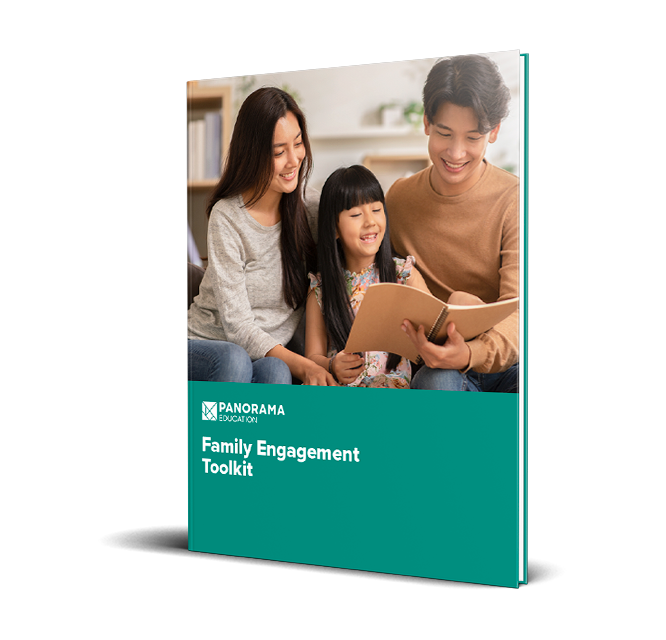Are you planning school events, but finding that only a few families attend?
Are you struggling to get caregivers to attend school activities or sign up for volunteer opportunities?
Do you feel like your students’ families just don't value education?
If you’re finding yourself asking these questions, then it’s time to rethink your family engagement practice.
Family involvement at all grade levels is critical to student achievement, but unfortunately efforts to engage caregivers in student learning aren’t always met with success. Traditional methods, such as school-wide events or homework checks, may be well-intentioned—but can often leave families feeling unwelcome and unvalued, even though they do want to be more involved in their children's learning.
The good news? Educators, district administrators, and school leaders have a real opportunity to reimagine family engagement. Dr. Karen Mapp, an expert researcher in the field of family engagement, has developed the Dual-Capacity Building Framework for Family-School Partnerships as a guide for developing equitable and inclusive programs and policies.
While every school’s practice will look different based on community context, Dr. Mapp's framework focuses on the following areas:
- Building trusting relationships with families
- Elevating and celebrating family voice, experience, and culture
- Inviting opportunities for co-creation in both academics and social-emotional learning
Below are three activities from expert organizations to guide and inspire your journey towards a stronger family engagement practice. Each of these strategies is rooted in Dr. Mapp’s framework and designed to help families and educators work together to support student success.
|
Why "family engagement" and not "parent involvement"? We use the terms "family engagement," "family," and "caregivers" in this article to recognize and respect all caring adults in children's lives who support learning. |
Download Now: Panorama's Free Family Engagement Toolkit
Building Relational Trust
1. Virtual Home Visits


Courtesy of Panorama Education and Stand for Children
Overview: As we build new systems to safely educate students and support families, the foundation for success remains the same: relationships. Virtual Home Visits help teachers establish trusting relationships with students and families, even when they cannot meet face-to-face. They are also an opportunity to meaningfully inform families of their child’s academic standing. Equip yourself with resources and tools to implement a virtual home visit program in your school or district.
Guidance for Implementation:
What is a Virtual Home Visit?
- A proactive, intentional re-engagement of families.
- A scheduled video or phone call between a teacher and a student’s family, from the teacher’s home to the family’s home (duration varies, but expect 20-30 minutes).
- Takes place during the first grading period of the school year, with recommended follow-up at least once per semester (as dictated by the support and informational needs of the student and family).
The Virtual Home Visit Process
- Teacher, school, or school district chooses the platform for video calls (with ease of use for families as a key consideration).
- Teacher invites each of their assigned families to a Virtual Home Visit. (See Stand For Children's virtual home visit guide.) Teachers with more than one class of students can use the homeroom or advisory roster.
- Teacher sends confirmation to scheduled families, including call date/time and details of how to connect.
- Teacher tracks Virtual Home Visits conducted and those still to be conducted or scheduled.
The Payoff of Virtual Home Visits
- Proactive communication demonstrates care and puts teachers and families on the same team.
- Face-to-face visits (even video visits) build connection, empathy, and trust.
- Teachers and families learn about one another, leading to true partnerships that benefit students.
Elevating Family Voice, Experience, and Culture
2. Family-School Relationships Survey

Courtesy of Panorama Education
Overview: Schools that successfully engage families find that their students earn higher grades and test scores, develop better social skills, and are more likely to graduate. The Family-School Relationships Survey was developed at the Harvard Graduate School of Education to provide school leaders with a clear picture of family attitudes by elevating family voice.
Guidance for implementation: Schools can use the Family-School Relationships Survey to gather feedback while effectively engaging caregivers. Designed as a series of scales—or groups of questions that capture different aspects of the same underlying theme—the survey helps educators measure different aspects of family attitudes across the following topics:
- Family Engagement - The degree to which families become involved with and interact with their child’s school.
- School Fit - Families’ perceptions of how well a school matches their child's developmental needs.
- Family Support - Families’ perceptions of the amount of academic and social support that they provide their child with outside of school.
- Family Efficacy - How confident families are with regard to key parenting skills.
- Learning Behaviors - Families' perceptions of their child's learning-related behaviors
- School Climate - Perceptions of the overall social and learning climate of the school.
- Barriers to Engagement - Factors that can create challenges for families to interact with or become involved with their child’s school.
- Role and Responsibilities - Perceptions of who should be primarily responsible for school success.
- School Safety - Perceptions of student physical and psychological safety at school.
The survey is available in 11 languages and can be administered to any K-12 school community (private or public school, independent or charter, urban or rural). To access the complete set of topics and questions, download the Family-School Relationships Survey.
|
In Panorama's Playbook, educators can access research-backed family engagement activities, lesson plans, and SEL interventions from leading curriculum providers. |
Engaging Families as Co-Creators
3. Worldview Art

Courtesy of Camp Kindness Counts
Overview: Participants will expand their self-awareness and reflect on their worldview by illustrating parts of their life that shape how they see the world. In doing so, they will learn to recognize strengths and appreciate diversity. Practicing awareness helps us pay attention to what goes on in the world—both in and beyond our community—so we can spread kindness even further.
Guidance for Implementation:
Introduction: Let’s learn about awareness in the world. Awareness is noticing what is happening inside and outside of us.
- How can you notice what is happening in the world beyond what you can see and experience right now?
- Can we learn through reading books, news articles, videos, or simply talking and listening to others?
We are going to think about how we can be aware of others through Worldview Art!
Activity: All of us have what is called a worldview: how we experience the world and what happens around us. We can’t see other people’s worldviews, but everyone has one! Think about what shapes your view of the world. For example, maybe you care about the environment because you like playing in nature or gardening, or maybe you are interested in music because you listen to different types of music at home or at school.
Gather your writing and coloring materials and draw a large circle on paper to represent a globe. Inside the globe, illustrate some of the parts of your life that shape how you see the world:
- What are you curious about?
- Do you like to explore different types of food and places?
- How do you learn about people’s lives from different places around the world?
- What do you spend your days doing?
- Who do you spend time with at home and school?
Think about who and what helps to shape your view of the world. Think about how your experiences can influence what you are interested in, how you treat others, and how you treat the environment. Consider the following:
- Can we learn from those who do not live in the same area as you do?
- Do you have some things in common with those whose day to day life is different from yours?
- By taking the time to learn about someone else, do you think this helps to understand them better?
- Discuss how you might see things differently or how your life might be different without one of the illustrations on your globe.
- What would change or stay the same if you didn’t speak the same language?
- What if you had to go to a different school starting next week? Would you still be able to hold the door open for someone at this new place as a way of offering kindness? Is it possible that others you don’t know would offer you kindness in return?
Invite Family Engagement: Make a promise to take a small step every day to affect the lives of people or other living beings around the world. Take a moment to think about those in the world who need help, how they may be feeling, and how you could help them. Can you aim to use less water and help get water to those in need? Can you pass on kindness to a stranger? How can you help your fellow community members? Children can ask family members to share their worldviews as well and consider similarities and differences.
|
Further your learning with these resources:
|
Download Panorama's Family Engagement Toolkit: Guides, Strategies, and 100+ Survey Questions


.jpeg)




